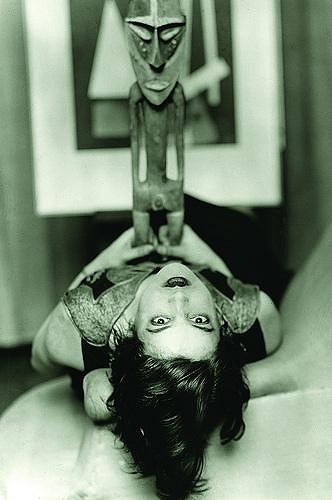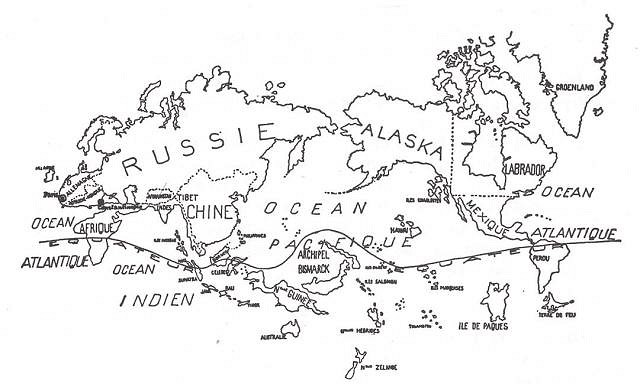Tiki Central / General Tiki / Man Ray, the Surrealists, and African/Pacific culture
Post #503566 by ikitnrev on Mon, Jan 11, 2010 11:56 AM
|
I
ikitnrev
Posted
posted
on
Mon, Jan 11, 2010 11:56 AM
Yesterday I attended a art exhibit at the Phillips Museum in Washington D.C., titled "Man Ray, African Art, and the Modernist Lens" which showed how Man Ray and other prominent art photographers of the 1920's and 1930's incorporated African art and artifacts into their works. It was quite interesting for me, as it provided another piece of the jigsaw puzzle of how non-Western art was exposed and became more acceptable to the general U.S. public. Here is one of Man Ray's more famous photographs from the show, 'Noire et blanche'..... Although the show did focus on African art, there was at least one art item from the Pacific included. Here is a Man Ray photograph of Simone Kahn, posing with a sculpture from Vanuatu (located in the Pacific Malekula Islands)
The promotional video for the show gives one a fairly good idea of what the show was about - I see definite common ground between the African art shown in this clip, and the wall displays and carvings in several tiki rooms I have seen. (at the 34 second mark, you see a closeup of a African drinking mug - precursor to a tiki mug?) The show also discussed the linkages between the surrealists and Pacific culture. After the devastation of World War I, the surrealists, in a form of protest, shifted much of their attention and focus to the more 'pure' cultures of the world, which were untouched by economic greed, colonialism, or massive displays of firepower. One item on display at the Man Ray show was this world map, showing a Surrealist View of the World - this was published in June 1929, in the Belgium Surrealist magazine 'Varietes'
This map was drawn after a period when the African zeitgeist had been a part of the Art World for several years (think of dancer Josephine Baker in Paris in the late 1920's.) There was a shift of emphasis of some from Africa to the Pacific, partly because the surrealists, with the need to be on the leading edge away from the mainstream, simply considered African art to be so 'yesterday.' It is somewhat ironic that the avant-garde surrealists, in protest to WW1, shifted their personal influences to the Pacific area in the 1920's and 30's. Yet it was WW2, and the after-effects of the large number of U.S. servicemen returning from the Pacific Islands, that played a larger factor in influencing the general U.S. population of Pacific cultural artificacts. The Man Ray show in D.C. ended yesterday - it will travel later this year to Albuquerque, Vancouver, and Charlottesville, Va. I quick flipped through the catalog, and was impressed enough to purchase it. Priced at $30 on amazon, it is a welcome addition to my personal library section. http://www.amazon.com/Man-Ray-African-Modernist-Lens/dp/081667017X Vern |



